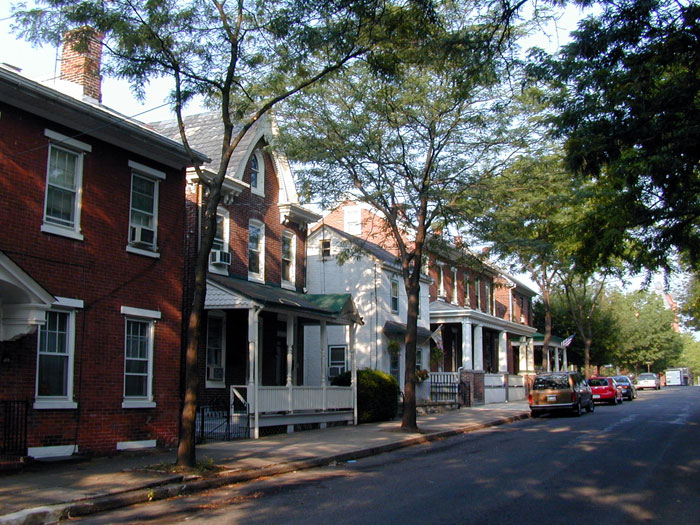Tree maintenance
Trees need regular maintenance. Trees Inc. tries to trim each of Pottstown's street trees every five years. There are three elements to tree maintenance:
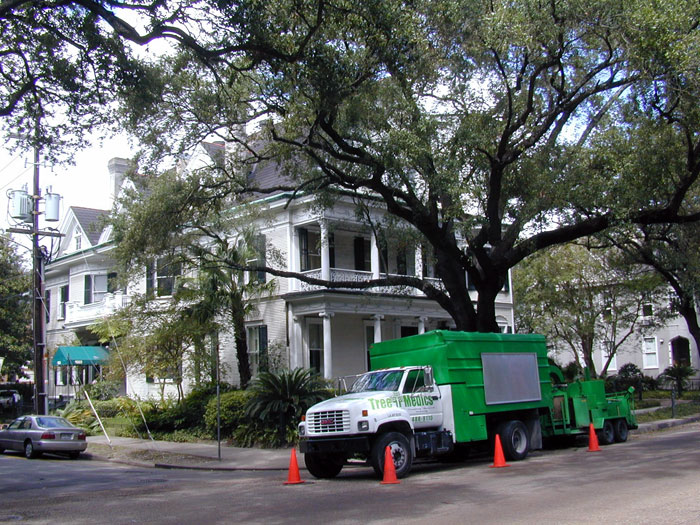
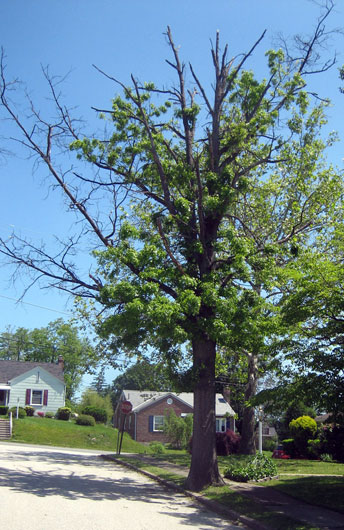
1. Remove dead and rubbing branches
Deadwood is not only hazardous, it turns the beauty of nature into an eyesore.
2. Remove low-hanging branches
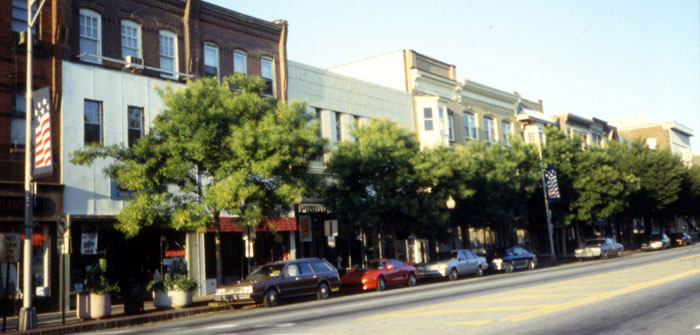
Trees that are too low block the street and the sidewalk. Trees Inc. aims to elevate the lowest limbs on mature trees to 16 feet, high enough to provide clearance even for tractor-trailers.
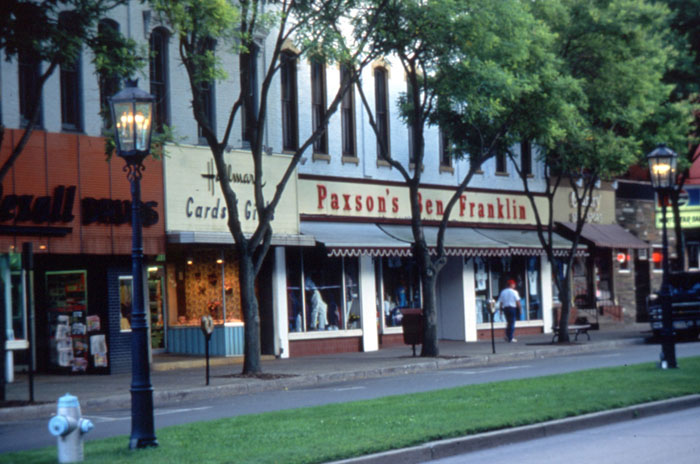
These trees on Wellsboro's main street provide plenty of clearance for stores signs and second floor windows. But they need to be trimmed every few years to keep leafy branches at least 16 feet off the ground.
3. Clear buildings by at least five feet
This tree at left is not only too low over the sidewalk, it's growing into the building next to it. The honey locust at right has been trimmed 16 feet above the street and five feet away from the adjacent building. This maintenance should be good for another five years.
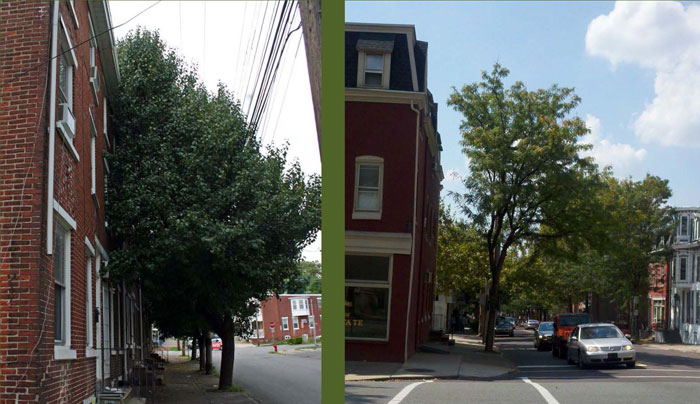
Big canopy trees necessary
Obviously, if you want a canopy over the street, you need trees that will eventually reach 50 to 85 feet tall, high enough to clear rooflines and cars and trucks.
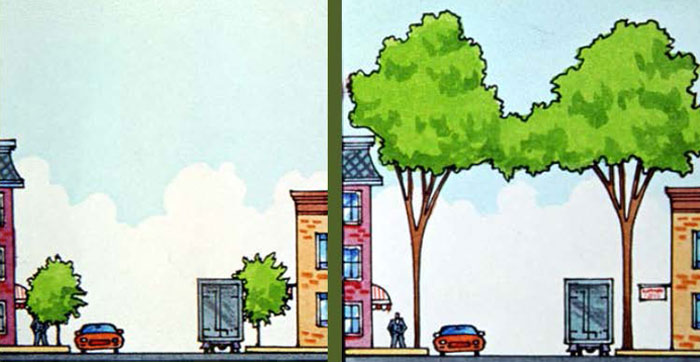
Planes, not dogwoods
The dogwood, below left, is never going to grow tall enough to make a good street tree. Below right, this plane tree in Paris has been specially trained in the nursery as a street tree. The lowest limbs are already at least 16 feet above street level.
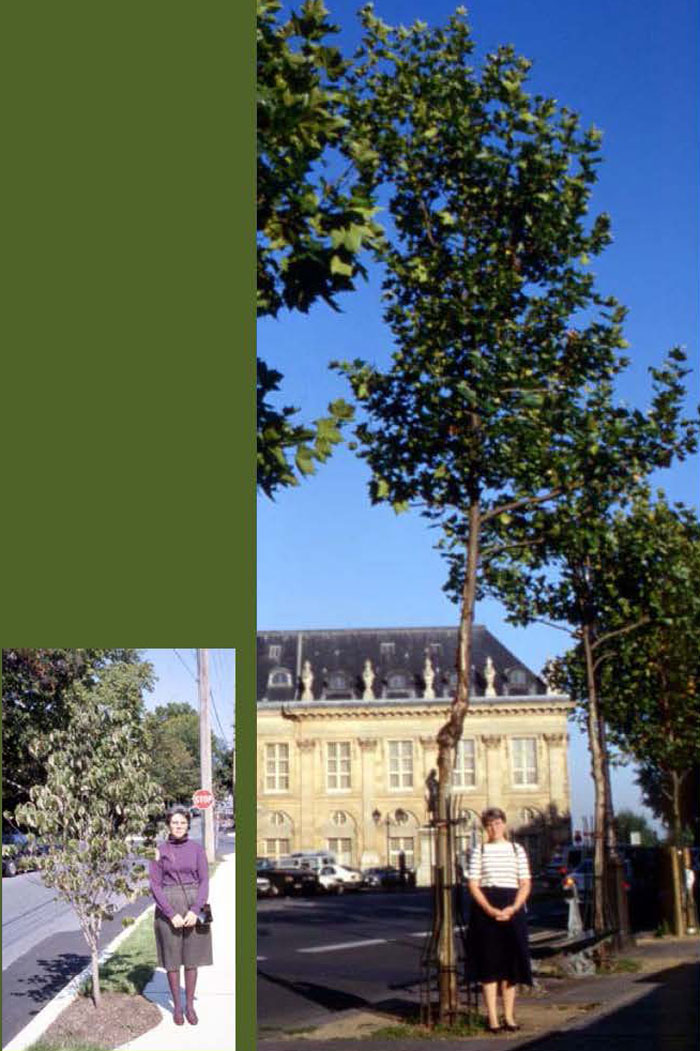
Properly elevated, trees can reach over buildings and shade them, greatly reducing energy costs in the summer.
